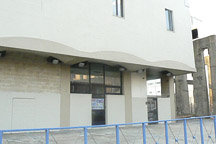Former City Councilman Steve Lipski, who founded the CREATE Charter School in 2000, said last week he and other staff members will try to meet with state officials in hopes of keeping the school open.
The school, which consists of a high school on Lembeck Avenue in Jersey City’s Greenville section with 279 students and a middle school downtown on Canal Street with 94, faces closure in June because the state’s Department of Education does not want to renew its charter.
On March 1, newly appointed state Education Commissioner Bret Schundler announced the school would be shuttered for alleged failure to correctly complete state-mandated reports, high staff turnover, poor student performance, failure to provide a structured learning environment, lack of student engagement, lack of control/discipline of students, and failure to accurately report violence and vandalism statistics.
“Can we improve our program? One billion percent.” – Steve Lipski
________
The school got a slight reprieve on March 12. Schundler responded to a letter from Stephen Stamos, president of the school’s Board of Trustees, saying he considered Stamos’ letter on the school’s closing a “motion of reconsideration.”
That means state school officials will review the issues brought up in the letter and respond “within a reasonable time frame.” Although Lipski and other staff members say they want to meet with state officials, Education Department spokesperson Kathleen Forsyth said last week no date has been set for the meeting.
Lipski is hopeful the school will stay open, noting that the state approved opening the downtown branch only two years ago.
“How can a school that is [supposedly] struggling and in trouble be granted a license to expand?” Lipski said.
The news of the CREATE Charter School’s potential closure comes at a bad time. The high school was rocked recently when a student was caught carrying a gun into the school and a fight broke out between a student and a security guard on the same day. Lipski said both students have been suspended, and the young man carrying the gun will be expelled.
It was also reported last week that a former security guard at the school faces sex offense charges.
Chartering a different course
Charter schools are founded by parents and/or educators and can avoid some of the strict state oversight and teacher’s-union control that other public schools must face. They get most of their funding from the state. Students enrolled in the school are chosen from a lottery. They remain tuition-free public schools.
CREATE Charter School is among 13 charter schools located in Hudson County. But both of its locations could be history if the state’s Department of Education (DOE) does not renew the school’s five-year charter, which expired earlier this year.
Steve Lipski wants at least a 90-day probationary period this fall to put together an “action plan” to improve the school’s operations.
“Can we improve our program? One billion percent,” Lipski said. “All we are asking for is the opportunity to do probation to get there.”
Lipski also said the reason for the initial announcement of the school’s closing was “misinformation” the DOE received about the school’s performance and other issues.
For example, Schundler in his March 1 letter to the school noted that only 4.8 percent of the school’s senior class was proficient in language arts last year, and just 2.7 percent was proficient in math. “Proficiency” in those subjects was based on the results of juniors taking the state exam known as the High School Proficiency Assessment in order to graduate the year after as seniors.
Those who fail the test the first time can take the test twice in their senior year.
Lipski believes the 4.8 percent in language arts and 2.7 percent in math were the percentages of seniors who did not pass in the first two attempts and was “misclassified” as the percentages for all the seniors.
Lipski also pointed out that state data shows about 48 percent of CREATE High School students who graduated in 2009 passed the HSPA, while 35 percent of the students graduated by passing the Special Review Assessment, a alternative test for those who failed the HSPA. The remaining 17 percent were exempt from the test. Those numbers, Lipski said, compares favorably to other high schools in the area.
Ricardo Kaulessar can be reached at rkaulessar@hudsonreporter.com.
